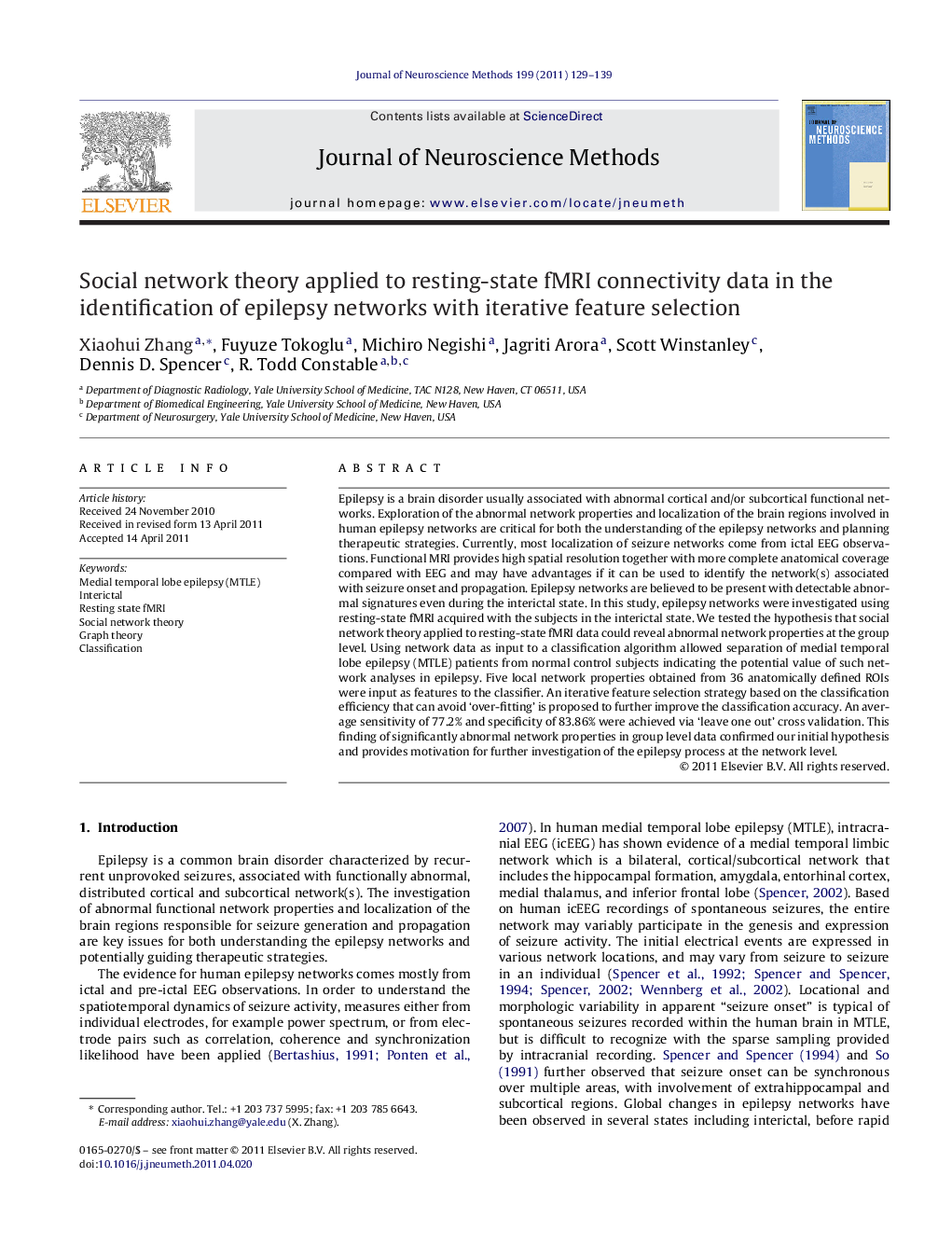| کد مقاله | کد نشریه | سال انتشار | مقاله انگلیسی | نسخه تمام متن |
|---|---|---|---|---|
| 4335405 | 1295152 | 2011 | 11 صفحه PDF | دانلود رایگان |

Epilepsy is a brain disorder usually associated with abnormal cortical and/or subcortical functional networks. Exploration of the abnormal network properties and localization of the brain regions involved in human epilepsy networks are critical for both the understanding of the epilepsy networks and planning therapeutic strategies. Currently, most localization of seizure networks come from ictal EEG observations. Functional MRI provides high spatial resolution together with more complete anatomical coverage compared with EEG and may have advantages if it can be used to identify the network(s) associated with seizure onset and propagation. Epilepsy networks are believed to be present with detectable abnormal signatures even during the interictal state. In this study, epilepsy networks were investigated using resting-state fMRI acquired with the subjects in the interictal state. We tested the hypothesis that social network theory applied to resting-state fMRI data could reveal abnormal network properties at the group level. Using network data as input to a classification algorithm allowed separation of medial temporal lobe epilepsy (MTLE) patients from normal control subjects indicating the potential value of such network analyses in epilepsy. Five local network properties obtained from 36 anatomically defined ROIs were input as features to the classifier. An iterative feature selection strategy based on the classification efficiency that can avoid ‘over-fitting’ is proposed to further improve the classification accuracy. An average sensitivity of 77.2% and specificity of 83.86% were achieved via ‘leave one out’ cross validation. This finding of significantly abnormal network properties in group level data confirmed our initial hypothesis and provides motivation for further investigation of the epilepsy process at the network level.
► MTLE patients were classified from healthy controls by using social network theory.
► Abnormal network properties were detected at the group level in resting-state fMRI.
► A feature selection strategy was proposed to improve the classification accuracy.
► Sensitivity of 77.2% and specificity of 83.86% were achieved via cross validation.
Journal: Journal of Neuroscience Methods - Volume 199, Issue 1, 15 July 2011, Pages 129–139